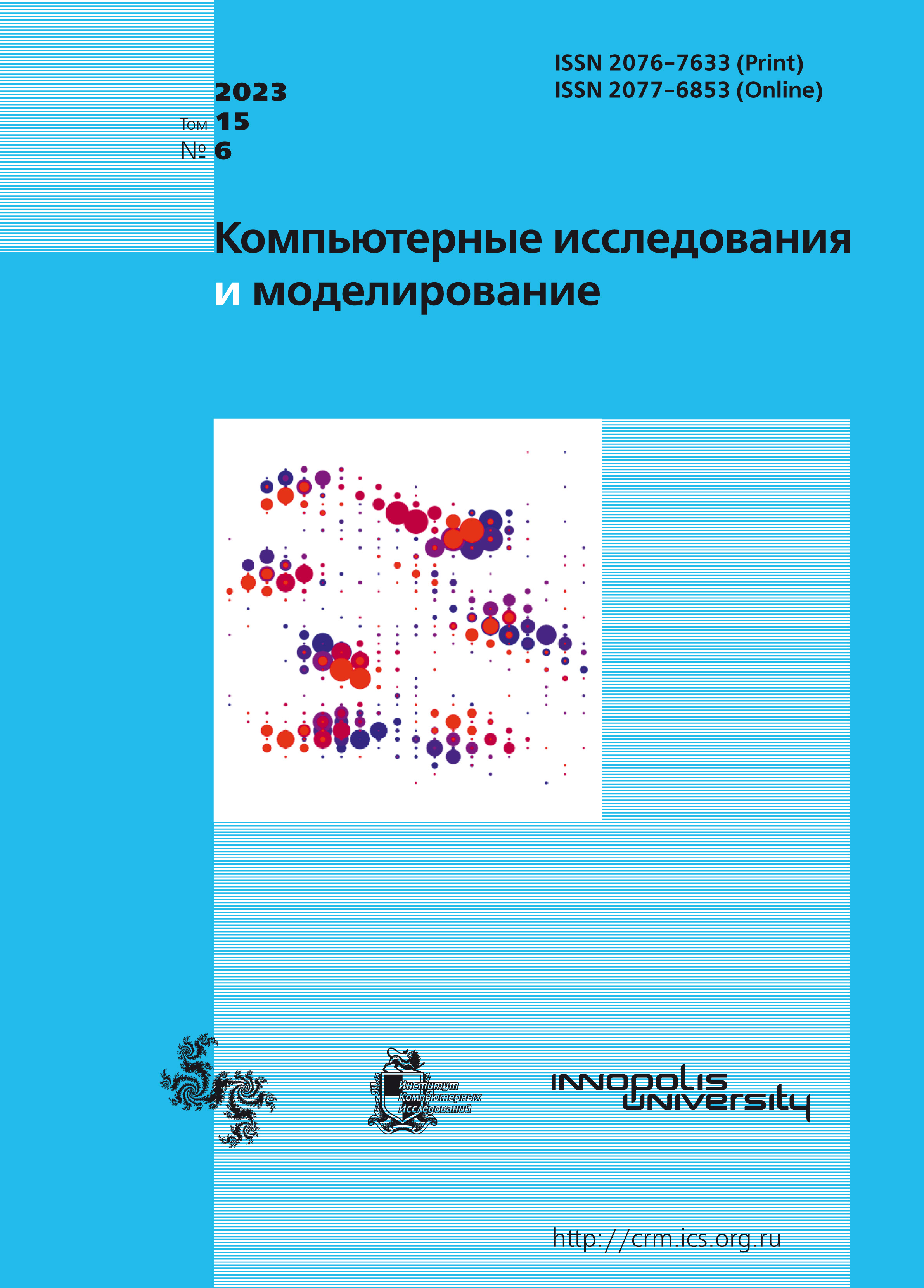All issues
- 2025 Vol. 17
- 2024 Vol. 16
- 2023 Vol. 15
- 2022 Vol. 14
- 2021 Vol. 13
- 2020 Vol. 12
- 2019 Vol. 11
- 2018 Vol. 10
- 2017 Vol. 9
- 2016 Vol. 8
- 2015 Vol. 7
- 2014 Vol. 6
- 2013 Vol. 5
- 2012 Vol. 4
- 2011 Vol. 3
- 2010 Vol. 2
- 2009 Vol. 1
Wave and relaxation effects during the outflow of a gas suspension partially filling a cylindrical channel
 pdf (927K)
pdf (927K)
The paper is devoted to the study of wave and relaxation effects during the pulsed outflow of a gas mixture with a high content of solid particles from a cylindrical channel during its initial partial filling. The problem is formulated in a two-speed two-temperature formulation and was solved numerically by the hybrid large-particle method of the second order of approximation. The numerical algorithm is implemented in the form of parallel computing using basic Free Pascal language tools. The applicability and accuracy of the method for wave flows of concentrated gas-particles mixtures is confirmed by comparison with test asymptotically accurate solutions. The calculation error on a grid of low detail in the characteristic flow zones of a two-phase medium was 10-6 . . . 10-5.
Based on the wave diagram, the analysis of the physical pattern of the outflow of a gas suspension partially filling a cylindrical channel is performed. It is established that, depending on the degree of initial filling of the channel, various outflow modes are formed. The first mode is implemented with a small degree of loading of the high-pressure chamber, at which the left boundary of the gas-particles mixture crosses the outlet section before the arrival of the rarefaction wave reflected from the bottom of the channel. At the same time, the maximum value of the mass flow rate of the mixture is achieved. Other modes are formed in cases of a larger initial filling of the channel, when the rarefaction waves reflected from the bottom of the channel interact with the gas suspension layer and reduce the intensity of its outflow.
The influence of relaxation properties with changing particle size on the dynamics of a limited layer of a gas-dispersed medium is studied. Comparison of the outflow of a limited gas suspension layer with different particle sizes shows that for small particles (the Stokes number is less than 0.001), an anomalous phenomenon of the simultaneous existence of shock wave structures in the supersonic and subsonic flow of gas and suspension is observed. With an increase in the size of dispersed inclusions, the compaction jumps in the region of the two-phase mixture are smoothed out, and for particles (the Stokes number is greater than 0.1), they practically disappear. At the same time, the shock-wave configuration of the supersonic gas flow at the outlet of the channel is preserved, and the positions and boundaries of the energy-carrying volumes of the gas suspension are close when the particle sizes change.
Copyright © 2023 Shirokova E.N., Sadin D.V.
Indexed in Scopus
Full-text version of the journal is also available on the web site of the scientific electronic library eLIBRARY.RU
The journal is included in the Russian Science Citation Index
The journal is included in the RSCI
International Interdisciplinary Conference "Mathematics. Computing. Education"






